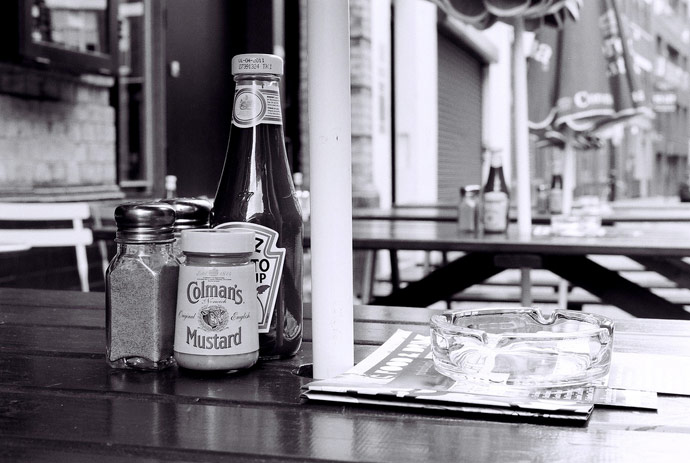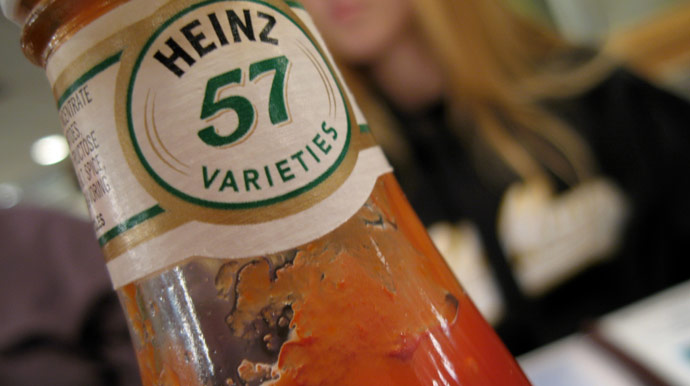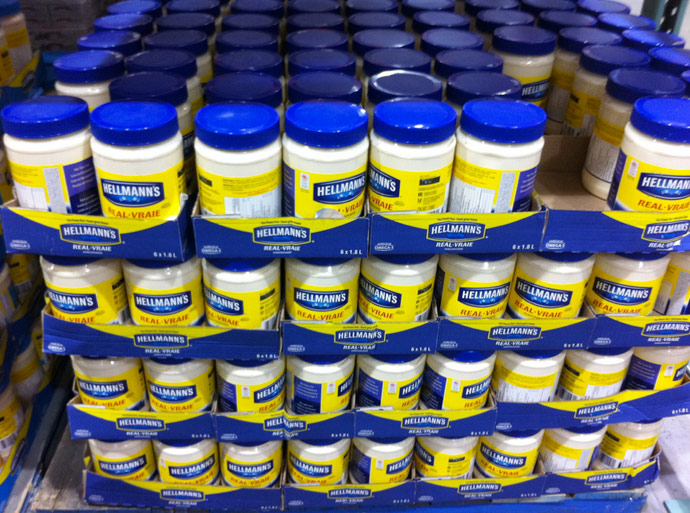Classic Condiments: Before They Were Staples

Image via Flickr/ Phil Gyford
Pass the condiments, please. Whether it be ketchup, mustard, mayonnaise or some other food enhancer, humans have been using condiments since prehistoric times. Salt was originally used as a preservative, but people soon learned it enhanced the flavors of their meals. Later, mustard seeds were used to add an extra zip to otherwise bland food, and were even placed in King Tut’s tomb in Egypt. Olive oil and vinegar were used before more complex condiments such as mayo and ketchup. But each condiment has its own unique history.
Ketchup

Image via Flickr/ William Hartz
Believe it or not, ketchup was originally a Chinese concoction—when it looked and tasted nothing like the variety we dip French fries in today. It was in the late 17th century that a combination of pickled fish and spices was named ke-chiap. British explorers discovered the sauce during the early 18th century and took it back to their homeland, where it was ultimately called ketchup. It was some time, however, before tomatoes were added. In fact, a 1727 cookbook, “The Compleat Housewife,” called for anchovies, shallots, vinegar, white wine cloves, ginger, mace, nutmeg, pepper and lemon peel in its recipe.
The first time a recipe for tomato ketchup appeared was likely 1801, in the American cookbook entitled, “Sugar House Book.” The book called for 100 tomatoes and a half-pound of salt, which were boiled before being pressed through a fine sieve. Nutmeg, allspice, cloves, cinnamon, ginger and pepper were also added. Obviously, the ketchup was still vastly different from today’s condiment.
Later in the 19th century, people began to sweeten their ketchup, and entrepreneurs began to distribute the tomato concoction. In 1876 F & J Heinz launched its famous line of tomato ketchup with the slogan, “Blessed relief for Mother and other women in the household,” referencing the tedious process of making ketchup in the home.
Mustard

Image via Flickr/ Muse Lin
Historians’ belief mustard plants were first cultivated in 3,000 BC India. The plant is mentioned in the Bible as Hebrews used the plant and its seeds for cooking—Abraham actually served cow tongue with mustard. Ancient Greeks used mustard as a condiment and a medicine. In fact, Pythagoras prescribed the concoction to treat scorpion stings, and Hippocrates used ti to aid toothaches. Recipes for the condiment—calling for pepper, caraway, oil, coriander, dill, celery, thyme, oregano, vinegar and honey—have been found in ancient Roman texts. Around 50 BC the Romans took the mustard seed to Gaul where monks began to cultivate the plant.
By the late 10th century, Parisian monks were producing mustard, and it appeared in historical registries in Paris by the late 13th century. Around that time, Dijon, France became a recognized center for mustard making. Believe it or not, Grey-Poupon began producing the condiment in 1777, and soon the first automatic mustard maker was introduced.
Mayonnaise

Image via Flickr/ daDOUBLEryl
The salty, creamy condiment may have been created by accident. Legend has it that in 1756 a French chef wanted to make a sauce made of cream and eggs. But when he realized there was no cream in his kitchen, he substituted olive oil, and condiment history was made. Mayonnaise may have been named for the old French word “moyey,” which means “yolk of egg.” Or it could have been named for the chef’s employer, the Duc de Richelieu, who had just conquered the British at Port Mahon. Another story places the origin of mayonnaise in 15th century London when a woman accidentally created the condiment while trying to make custard.









































